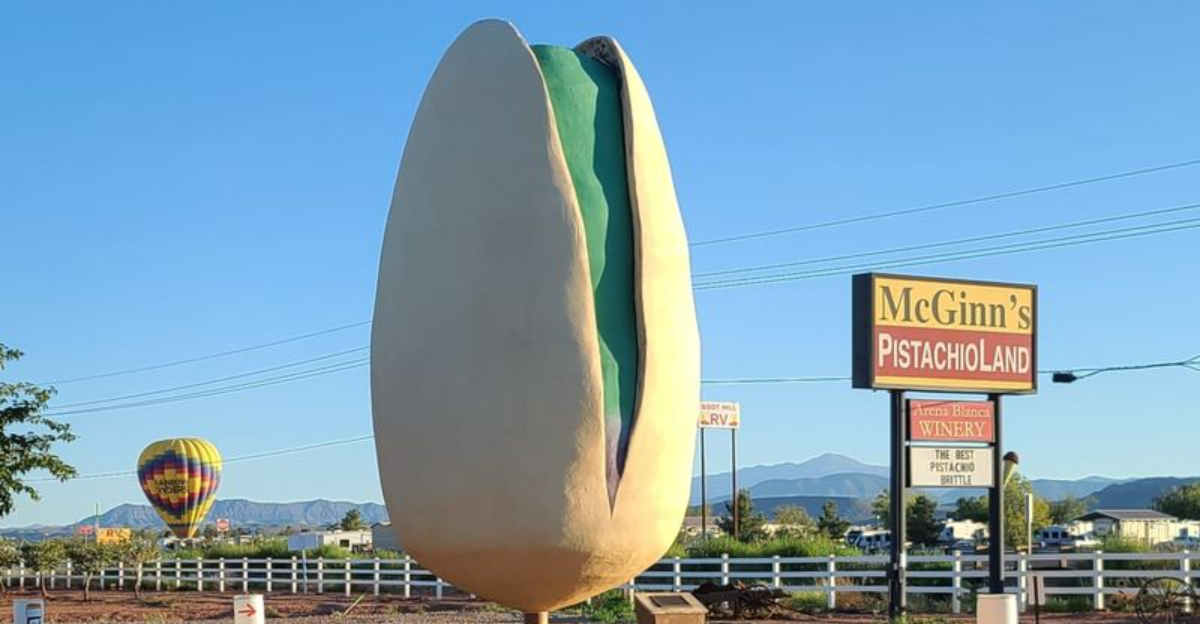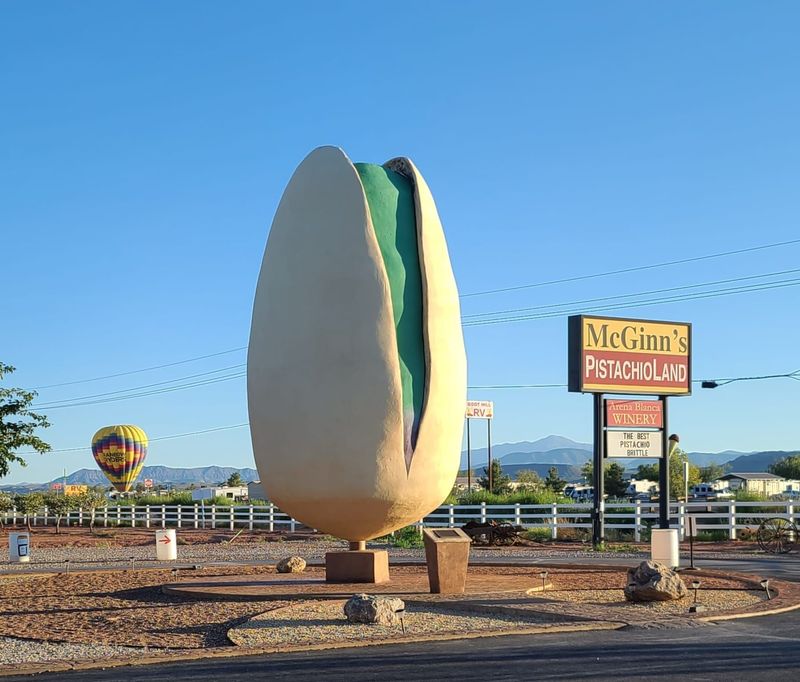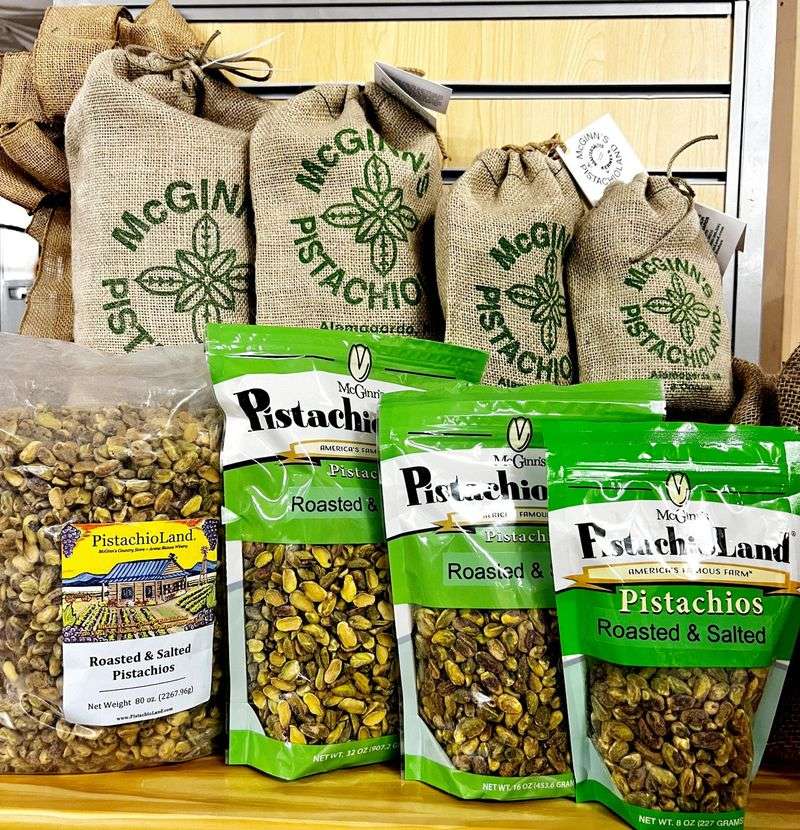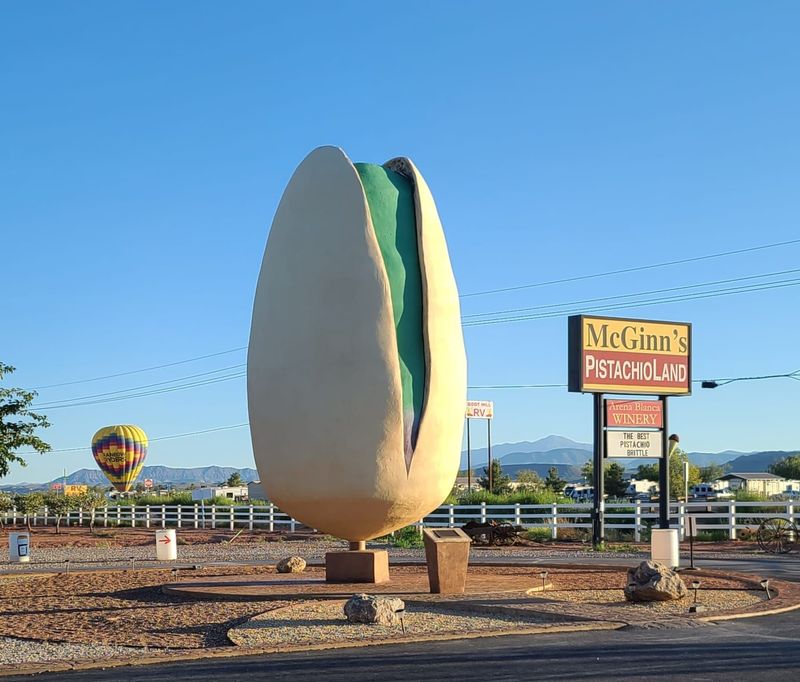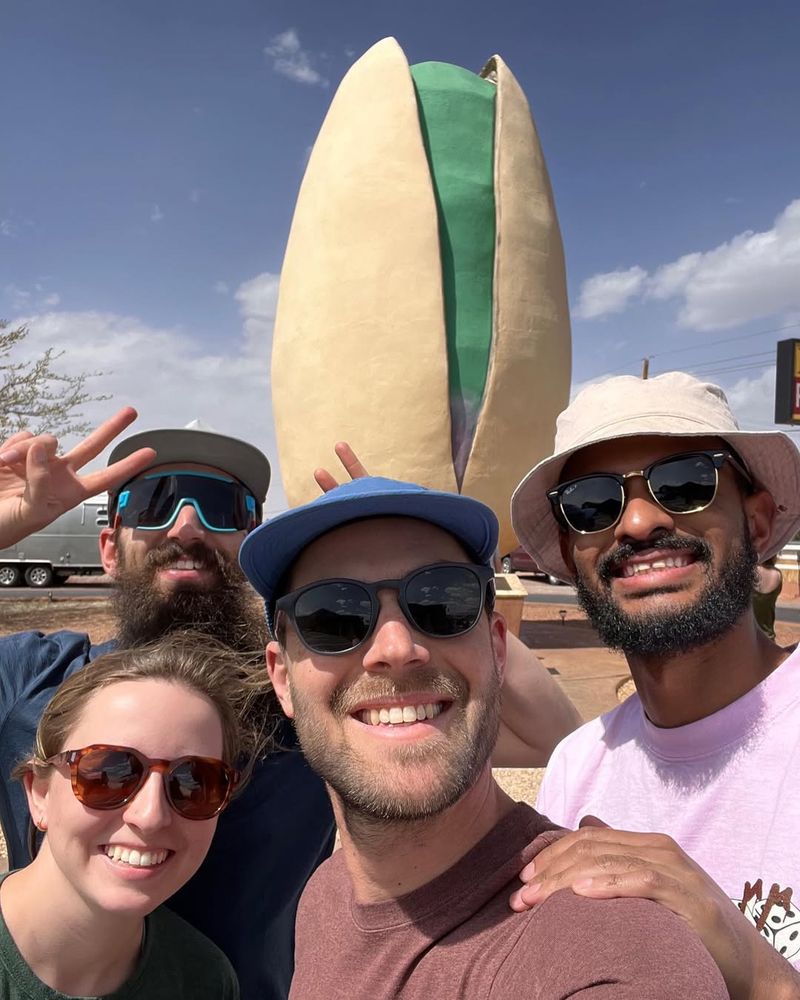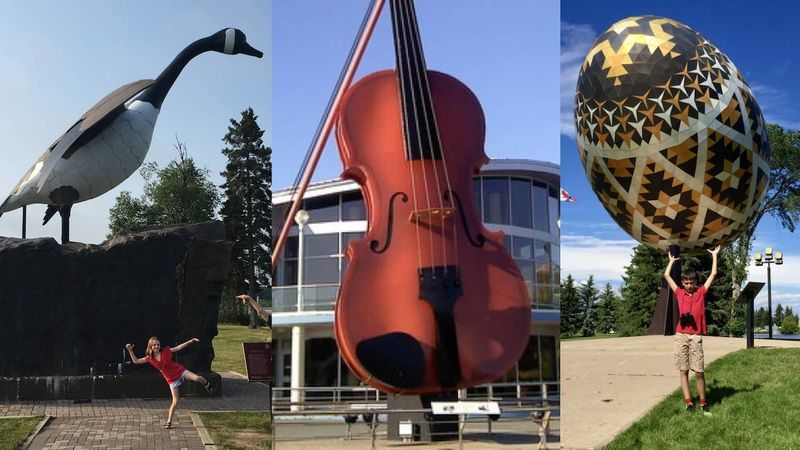New Mexico is home to one of America’s most unusual roadside attractions: a 30-foot-tall pistachio sculpture that towers over the desert landscape. This giant nut isn’t just a random piece of folk art—it marks the entrance to a working pistachio farm and winery that celebrates the region’s agricultural heritage. Road-trippers from across the country make the detour to snap photos, taste pistachio ice cream, and learn about desert farming in one of the most unexpected stops along the Southwest highway.
Monumental Nuts & Roadside Legacy
Standing 30 feet tall beside McGinn’s PistachioTree Ranch & Winery—better known as PistachioLand—this colossal concrete pistachio has become a beloved landmark in southern New Mexico. Built by the son of the farm’s founder, the sculpture serves as a heartfelt tribute to his father’s lifelong dedication to pistachio farming.
What makes this attraction so special is its playful absurdity. Taking an everyday snack and blowing it up to epic proportions creates the kind of memorable, quirky charm that roadside-attraction enthusiasts crave. The massive size and vivid colors make it impossible to miss from the highway, drawing curious travelers off the beaten path for a closer look and a few unforgettable photos.
Craft and Construction
Creating a sculpture of this magnitude required serious engineering and artistry. More than five yards of concrete went into forming the giant nut’s shell and body, giving it the structural integrity to withstand desert winds and blazing sun. To achieve its realistic pistachio appearance, artists used 35 gallons of paint in shades of green, tan, and cream.
The installation process was equally impressive. A sturdy pole anchors the sculpture nine feet deep into the ground, ensuring it stays upright despite its towering height. While obviously not a real nut, the attention to scale, material choice, and color detail transforms what could have been a simple billboard into an iconic piece of roadside art that visitors remember for years.
More Than a Monument: Farm, Winery & Experience
PistachioLand offers far more than just a giant photo opportunity. Surrounding the sculpture is a fully operational pistachio farm and vineyard, complete with a country store, ice-cream parlor, and wine-tasting room. Visitors can wander through the orchard to see how pistachios actually grow in the desert climate.
The gift shop stocks creative pistachio-based products that you won’t find anywhere else—think chili-chocolate pistachios, pistachio brittle, and even pistachio milkshakes. Wine lovers can sample locally produced vintages made from grapes grown right on the property. This combination of quirky attraction and genuine agritourism makes the stop worthwhile for families, foodies, and curious travelers alike, offering both entertainment and education in one memorable visit.
Cultural & Regional Significance
Placing a giant pistachio sculpture in the American Southwest isn’t random—it reflects the region’s agricultural innovation and success with desert farming. Pistachios thrive in arid, sun-drenched climates, making southern New Mexico an ideal growing location. The monument celebrates how farmers have adapted to harsh conditions and turned challenging landscapes into productive orchards.
Beyond agriculture, the sculpture highlights how roadside attractions shape local tourism and give smaller communities a distinctive identity. In an age of interstate highways and chain restaurants, quirky landmarks like this encourage travelers to slow down, explore off-highway destinations, and support local businesses. The World’s Largest Pistachio has become a symbol of regional pride and creative entrepreneurship in rural America.
Social Media Star and Photo Magnet
In today’s Instagram-driven travel culture, the World’s Largest Pistachio has found new life as a viral sensation. Travelers love posing beside the towering nut, creating humorous photos where they pretend to hold it, crack it open, or take a bite. The sculpture’s vibrant colors and absurd scale make it perfect for eye-catching social media content.
Hashtags like #WorldsLargestPistachio and #PistachioLand have thousands of posts from visitors documenting their stops. This online buzz creates a self-perpetuating cycle—people see the photos, add it to their road-trip bucket lists, visit themselves, and post their own pictures. For a small roadside attraction, this organic marketing has proven incredibly valuable, drawing younger generations who might otherwise skip traditional tourist stops.
Economic Boost for Small-Town Tourism
Roadside attractions like the World’s Largest Pistachio provide significant economic benefits to rural communities that might otherwise be bypassed by highway travelers. Each visitor who stops to see the giant nut represents potential revenue—not just at PistachioLand itself, but at nearby gas stations, restaurants, and lodging.
Local officials recognize that quirky landmarks help put small towns on the map, literally and figuratively. They draw attention to regions that lack major tourist infrastructure or famous natural landmarks. For Alamogordo and surrounding areas, the pistachio sculpture serves as an anchor attraction that encourages longer stays and repeat visits. Small businesses benefit when travelers spend time exploring the area rather than simply driving through on their way to bigger cities.
Part of America’s Roadside Attraction Tradition
The World’s Largest Pistachio joins a proud tradition of supersized American roadside attractions, from giant balls of twine to enormous dinosaurs. These monuments emerged during the mid-20th century as car travel became popular, designed to catch the attention of passing motorists and convince them to stop.
While some dismiss these attractions as kitschy or outdated, they represent an important piece of American folk art and cultural history. They embody optimism, humor, and local pride—qualities that resonate with travelers seeking authentic experiences beyond generic tourist destinations. The pistachio sculpture continues this legacy, proving that even in our digital age, people still love discovering unexpected wonders along the open road and sharing those moments with others.
